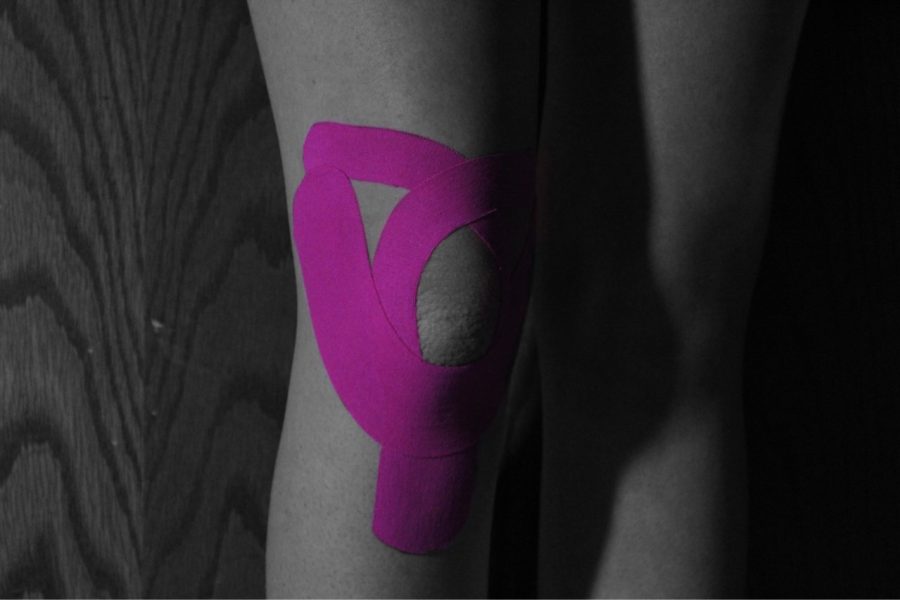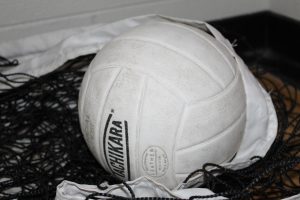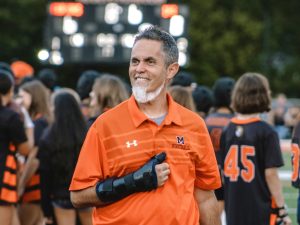Wrapping it up
As athletes wrap up their fall season, many look back or into the future regarding the injuries from their sport
Though the many tout the benefits of athletics, from team-building to physical fitness, less is said about the toll that sports play on adolescents physically, mentally and emotionally.
November 10, 2021
Aspen O’Brien steps off the court after being hit in the head. As she walks to the trainer and begins to be assessed, she feels the effects of the hit. She feels tired and has a headache constantly. Later Aspen was diagnosed with a concussion, leading her to not play volleyball for two weeks. After these two weeks Aspen had to recover mentally and physically.
Many athletes when they originally get their injury want to get back into the game as soon as possible.
“The first thing I asked him was when I’ll be able to come back and wrestle like how long would the injury take,” explained Dylan Drumheller, a wrestler, football, and baseball player, who had a shoulder injury during one of his first seasons.
Along with serious injuries, comemissing game time and practices, which can lead to athletes falling behind due to their injury, making them work harder to come back the best they can.
“I was out completely for a whole week so I missed those two games. Then I worked on returning so I missed another day. I was back for one of our home games on Thursday, but I would say it was not my best play because I had one practice that week,” described O’Brien.
Watching from the sidelines as their team plays and they can’t, can be a very mentally painful thing for athletes.
“It was killing. I really want to be out there like, and I know I can help my team out a lot. Especially in the last game like watching my senior night was one of the worst things,” explained Brody Hallin, a football player and wrestler who is injured with a separated AC joint.
Even though it can be incredibly difficult for these athletes to just watch from the sidelines, they still go to support their teammates and to help them throughout the game.
“I’m still there supporting the guys but I just want to be there in the end, even if I’m not playing,” described Hallin.
From being on the sidelines watching their team, athletes can see what is going wrong and how they can improve for when they come back.
“I normally talk to my hitters and my setters more because I like, thank them when they’ve given good passes and tell them that they’re doing well to keep up that like relationship. But there’s I mean there’s literally a whole part of the court that’s behind me that I don’t see,” explained O’Brien, “So just seeing that, to see oh like they’re doing this, and I’m not there. I’m like I can do this. I can talk to this person more. Just the parts that are left out because I’m not even looking at them. It was interesting to be able to watch that.”
During their injury some athletes re-realized their passion for their sport, pushing them to come back stronger and better.
“This is all I wanted to do,” stated Catarina Calabrese, a volleyball player who realized how strong her passion was for volleyball during her ACL injury her freshman year. After coming back from her injury, she worked to become a better and stronger player, while working towards getting college recruited.
While some athletes were able to push themselves to come out of their injury, many can not due to having a career ending injury. This makes the injury even tougher on the athlete because they lose the ability to play the sport they love.
“I’ve been playing football since I was like seven years old. I guess just growing up playing the game and like having that camaraderie with all the students. I’ve been playing it for so long and then like stop like just knowing that I’m not gonna play anymore is difficult” described Hallin.
Even though most athletes are able to come back from their injury, they can still feel the effect the injury has left. Depending on the injury, they are more likely to get re-injured. This can often worry an athlete when a pain comes in a remote area to their previous injury.
“I was actually kind of worried that the pain wouldn’t go away after that South game,” explained Andrew Hoffman, a football player who had a shoulder injury, “I was worried for the next couple of weeks that it was going to keep affecting me and I wouldn’t be able to play at the top of my game.”
Since athletes are often aware of the risks that they take becoming re-injured, they take precautions to prevent it. Most of the time each day playing their sport becomes even more special.
“Every time I walk in the gym, I now act as if it’s my last time playing,” Calabrese described.
When O’Brien returns for her first game back, she is filled with excitement and joy as she walks on to the court. This game means a lot to her, since it is her senior night, so she is determined to prove that she is back and is better than ever. After the game, she is proud of the work that she did and is very happy to be back in the game.











